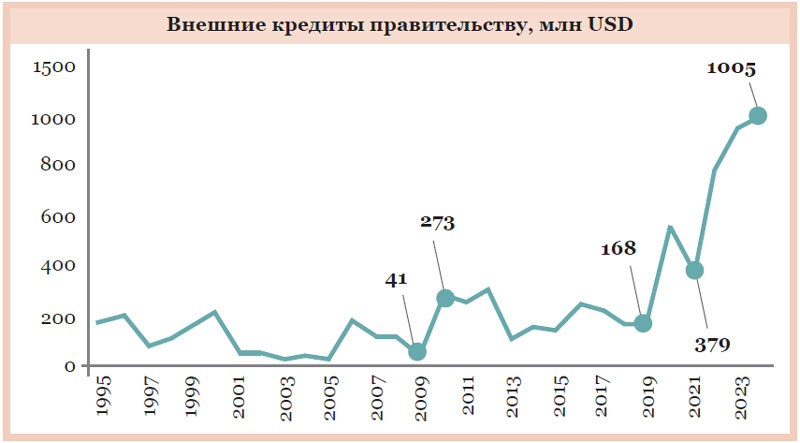
Over the year (February to February), the total state debt increased by 18%, or by 18.5 billion lei. Its specific weight has also increased: in annual terms – by 3 p.p.. In February, it amounted to 35.2% of GDP. The main “merit” is attributed to the state’s internal borrowings. The contribution of external loans was less significant.
“Given the upcoming elections and stagnation in the economy, the financial needs of the government will inevitably grow. Borrowing in the domestic market will also grow. The increase in total government debt since the beginning of the year is already largely due to the growth of domestic debt as a result of the issue of government securities and favorable securities market conditions,” says economist Volodymyr Golovatyuk.
In February, the internal state debt grew by 1 billion lei, while in March – by 1.5 billion lei. On March 31, the volume of domestic borrowings amounted to about 47 billion lei. The significant amount of external credit support from the EU, expected by the government, will support the upward trend of the total debt liabilities.
As for the external debt, the state is the main contributor to its increase. The gross external debt of the Republic of Moldova increased by 0.9% during 2024 and amounted to $10,213.33 million – 56.1% of GDP. Moreover, the main contribution to this increase, as reported by the NBM, was made by the increase in public debt, while the private debt decreased. Long-term external debt still had the largest share in the total volume of granted credits (76.3%), its value increased by 4.8%. Short-term external debt as of 31.12.2024 decreased by 9.8% and amounted to 23.7% of the total gross external debt.
The regulator also notes the acceleration of the pace of external financing and preservation at the same level or even – reduction of long-term external debt servicing. This means that it is becoming increasingly difficult to cope with the servicing of external loans.
According to the expert’s observations, the significant volume of lending, even after the repayment of earlier loans (34% of new loans in 2024, 51% in 2023, etc.) has led to a significant increase in external debt. Compared to the summer of 2021, the external public debt increased by 81% and amounted to $4.25 bln vs. $2.35 bln.

As calculated by the NBM, the public external debt increased by $489.74 million over the year – up to $4.310 billion at the end of 2024. This amounted to 42.2% of the total gross external debt (+4.4 p.p. compared to the end of 2023). And 91% of total debt amounted to credit facilities taken by the authorities for current financing and debt servicing.
According to calculations, if the level of repayment remains unchanged (and it is already declining), the balance of long-term credit debt on the amounts already taken, the government will be able to repay only after 7 years. If, of course, it stops there. Otherwise, the repayment terms will only increase and the debt burden will increase.
As before, the IMF remains the main creditor of the state with a 31.7% share in the total public debt ($1,364.67 million), followed by the WB Group with 25.2% or $1,085.68 million (of which the debt to the International Development Association amounted to $793.46 million, and the debt to the International Bank for Reconstruction and Development – $292.22 million), the EBRD – 10.6% ($455.69 million) and the European Investment Bank – 10.5% ($453.45 million).







